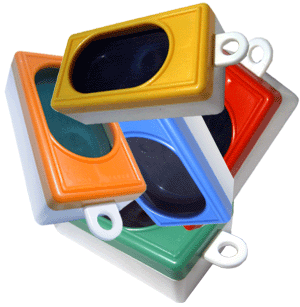Many times, what we see as disobedience in our pets is really miscommunication. The animal may not truly understand a command that we have given, or is just trying to get our attention the only way they know how, and sometimes it's just plain natural animal behavior.
~~~~~~~~~~~~
Attention seeking behaviors
For example: Jumping up on a person is a very common thing for dogs to do to get our attention. This behavior gets that person to look at them, talk to them and even touch them. Granted, the person is usually glaring, yelling and pushing the dog, but this 'attention' is better than nothing in the dog's mind.
We unintentionally 'teach' the dog that jumping will get them attention by responding with the glare, yell and push. What we should really do is ignore the jumping up as much as possible and reward the dog with our happy attention when his feet are on the floor.
It's easy in puppies. They learn very quickly that our attention stops when their feet leave the ground. In adult dogs, it's harder because they have had lots of practice and lots of rewards for jumping up. Remember, even negative attention is better than no attention to the dog.
Even cats get in on this game. When my cat, Piper was 3 years old she used to climb on the filing cabinet beside the desk while I was on the computer and start to head for the shelves mounted to the wall. I could scold her all day long and she'd just sit there. If I called her 'come' she'd eventually come down, but often I physically removed her for fear she'd jump and hurt herself or damage something on the shelves.
I finally realized she was simply climbing up there to get my attention and when I started to ignore the behavior all together, it went away. Now I give her attention for having her feet on the floor or other appropriate surface.
~~~~~~~~~~~~
Miscommunication - I don't know what you
want
Often we think a dog knows a command, when in reality he only knows it in certain situations. Dogs don't generalize easily. Generalization is when the animal can do a behavior on cue in any location under any circumstances - at home, at the vet's office, in a crowded room, around other dogs, etc.
Dogs have to be taught that a cue, like 'sit' means the same
thing regardless of where it is given or what type of distractions are around.
When we say 'sit' the dog hears us say the word, looks at our body posture, is
checking out what else is going on in the location, etc.
When first learning a
behavior the dog will pick up a large number of 'cues' not just your word or
hand signal. Even a smell can become part of the cue, therefore it is very
important to teach a new behavior in a variety of places, and make sure you
practice it when you are standing, sitting, stooped over, wearing different
clothes, shoes, etc. so that the dog comes to realize the 'cue' is the word
'sit' or your hand signal, even if the other stuff changes
~~~~~~~~~~~~
A dog is a dog is a dog
Let's face it, no matter how much we want to think of our pets as little, furry people, they aren't. They are domesticated animals. Animals that have learned to adapt and live with people, but still have their own unique responses and instincts. But they are a lot like people in that if left to their own devices, animals will set their own rules and entertain themselves.
When our dogs and cats are not given rules and taught how to behave in our world, that's when we see a 'disobedient' pet. When a dog is left in the backyard all day without anything to do, that is when we find the side of the house chewed up, plants dug up and dragged around the yard, and have our neighbors complaining that the dog was barking all day.
So even though dogs are dogs and cats are cats, we need to provide structure in their lives and entertainment for their minds. That's part of the pact we made when we domesticated them, when we take a pet into our lives. It's not just about giving them good physical care, good food, a place to sleep and visits to the vet. It's about providing for them emotionally and mentally as well.
Most dogs and cats learn very quickly what the rules of the house are, if the rules are consistent and they are reinforced properly. Physical punishment is not needed and can often be detrimental to your relationship with your pet, causing fear and aggressive responses.
If you have a 'disobedient' pet, think about what they are doing. Is there some way you can change the situation? Consider an obedience class for your dog. Set up interactive toys for your cat. If you have questions, please call us. (281) 440-6818
















